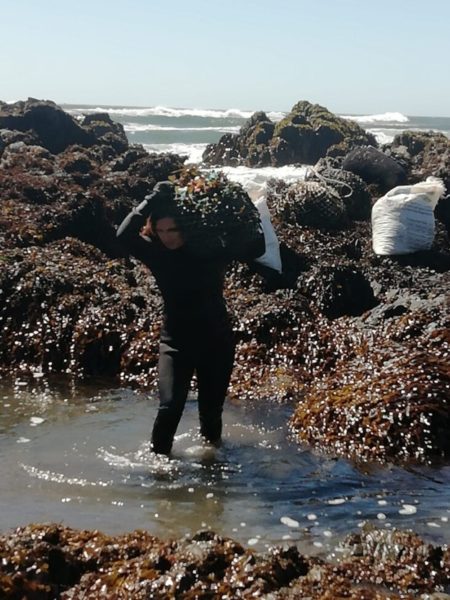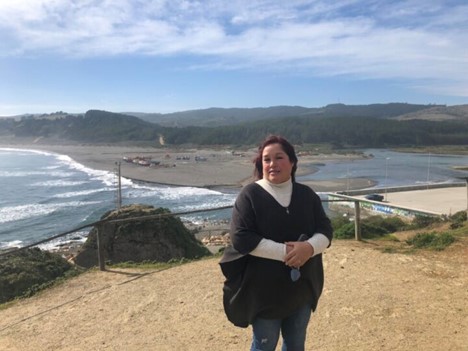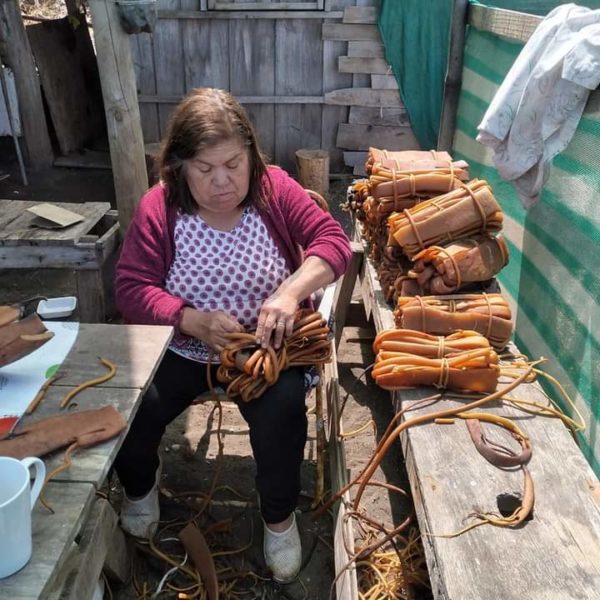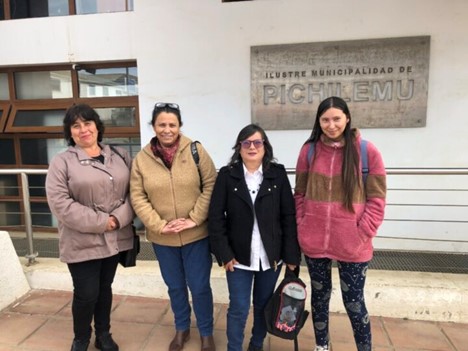Chilean “Fisherwomen” Seek Visibility and to Escape Poverty

HAVANA TIMES – A growing number of organizations are bringing together the Chilean women who work in the fishing and ocean trades. These women want to be recognized as workers, obtain some visibility for their harsh reality, and escape the unstable economic situation they currently endure.
Women like them have always been present in the work of fishing, but they’ve been ignored, considered nothing more than assistants, and relegated to the sidelines both socially and economically.
There are 103,017 women in Chile registered as small fisherwomen. Of this number 26,438 work gathering marine products from the shore, generally algae, and in related tasks. According to Chile’s National Fishing Service, a governmental agency, in 2023 there were 1,850 organizations of rustic fishermen; of these, 81 are specifically for women.
The fishing sector of this elongated South American country of 19.5 million exported 3.4 million tons of fish and shellfish in 2021, worth 8.5 billion dollars. Chile is one of the 12 largest fishing countries in the world, and its industrial fishing is the most economically important. Chile’s small fishing operations are carried out in some 450 small coves or inlets where groups of fishermen operate. These extend from Chile’s extreme north to its southern tip, a distance of just under 2500 miles.
The algae gathering is principally done by women during the short season from December to April. During the other seven months, the women who make their living from the algae eke out a bare subsistence with what they’re able to save, or with activities they improvise to have some income.
The overlooked women of the sea
Marcela Loyola, 55, is vice president of the Women of the Sea Group in the coastal town of Bucalemu, part of the Paredones municipality, some 160 miles (257 kms) southwest of Santiago, Chile’s capital. The group she helps lead brings together 22 algae gatherers with the women who clean and filet the fish, and those who sew and place the bait at intervals along the fishing nets. There are also women who pry open the shellfish to extract the edible meat.
“The main problem is that we women working in the fishing trade were invisible all over the country. We’ve always been in the shadow of our husbands. There’s also a lack of recognition on the part of the authorities, the politicians and society in general,” she told IPS, speaking from the cove in Bucalemu.
In Marcela Loyola’s view: “there are a lot of unions, but their proposals are only aimed at the men, never anything that could be useful to the women. And we don’t have health care, retirement, social security, nothing.”
Her association is working with the government’s National Fishing Service to promote the legalization of all those who work in the cottage fishing industry.
“We held a Day for Applications, and a lot of people came who didn’t previously have a permit. In Bucalemu alone, 60 signed up. Some have their fisherman’s credentials, but not the permits required for their jobs mooring the ships or collecting and hauling the cochayuyo – a type of algae that’s highly nutritional – or other related activities,” she explained.
Bucalemu was also the site of a National Gathering of Women of the Land and Sea, held on May 31, 2024, with the presence of over 100 delegates from different parts of Chile.
Gissela Olguin, 40, coordinates the national Network of Women of the Sea in the O’Higgins region. She told IPS that the gathering was aimed at defending food security in terms of the marine resources. “We’re working so that the women of the sea can learn about issues related to food security, starting with the right to the land, water, and the seeds. We analyze how the people of the sea are threatened today, because the unequal model of the countryside is now being repeated on the coast,” the leader stated.

Area managed only by women
Delfina Mansilla, 60, presides over the Union of Women Algae Gatherers in the town of Pichilemu, 128 miles southwest of Santiago. The Union has 25 members and is in charge of the area known as La Puntilla, the only point on Chile’s Central coast completely managed by women.
Speaking by telephone from her locale, the leader told IPS that the principal products harvested from their area of management includes cochayuyo algae (Durvillaea antárctica), El Huiro (Macrocystis integrifolia) – a brown seaweed also known as Sargassum – and the bivalve mollusks called “locos” (Concholepas concholepas).
The cochayuyo is harvested by going into the ocean in a diving suit and using a knife to cut the stem that adheres to the rocks below, so that the alga will grow back again. In the case of huiro, they use an iron crowbar the algae gatherers and fishermen call a chuzo.
“The main problem we have is that the men dive in our our area and disturb it. There are people who don’t respect the women and enter illegally into the area that was given to us and that we’ve taken care of for many years,” Delfina Mansilla described.
These women sell the shellfish to restaurants in Pichilemu, while the cochayuyo is commissioned by intermediaries from Bucalemu before it’s even been extracted and bundled, based on estimates of the quantity to be extracted.
Gisela Olguin believes there’s been an important increase in the organization of women nationally, thanks to the Chilean Law for Gender Equity, passed in 2020.
“Women in the fishing sector have been invisible, and even more so within the organizations of fishermen, because the associations and unions include women but they’re always a minority,” she affirmed. The law opened the way for women to train and organize.
She noted, however, that despite those advances, a macho mentality persists in the fishing industry. “They believe that women can’t be on the boats, and that they should have reduced spheres of action in the mooring. It’s the behavior of men who continue to think that women can only assist in the fishing tasks, but not really work in the industry,” she asserted.

Algae gatherers face grave hardships
Olguin, coordinator of the national network of Women of the Sea, called the situation of the women algae gatherers “very shaky.” “The women who work in the sea stay in huts that are nothing but shacks with minimal conditions, and that’s where they live and sleep. There’s no electricity or running water and each one must set these things up the best they can. The same goes for the sanitary situation – they have to use improvised toilets and bathing spaces,” she explained.
She added that the work was hard because the ocean sets the schedule. The first low tides could be at 7 am, or sometimes at noon in the middle of summer, when the full force of the sun beats on their heads. “Conditions are always a little extreme. Tossing the algae out of the waves when the cochayuyo is cut is work that requires a lot of physical strength.”
Since the season is very short, the women prefer to remain in these huts – living spaces that have been devised using sticks and other random driftwood. The shelters are erected on the sand, or other surfaces, and look like tents.
“The women here stop going to the sea only when their bodies finally keep them from doing so. I know women over 70 who are still working on the shore, because it’s their way of subsisting,” she added.
A determining factor is the price of the algae. This is set by the buyers and ranges from 200 – 500 Chilean pesos a kilo (2.2 pounds), roughly US 20-50 cents. In order to make good money, the gatherers work long hours to harvest the greatest possible amount. “It’s a sector that’s very unstable economically, with no social security and no cultural recognition,” Olguin concluded.

Algae threatened by climate change
Alejandra Gonzales, with a PhD from the University of Chile in Ecology and Evolutionary Biology, told IPS that some species of dark and red macro-algae present on the Chilean coasts are used as raw material for the food, pharmacology, and medical industries.
Their commercial value and high demand has provoked a process of direct extraction that “has generated a reduction and fragmentation of the natural populations, with a slow level of recuperation among those that survive the harvest.”
“This scenario means that the populations are less prepared to face changes in the environment, leaving them vulnerable to events like El Niño, heat waves, an increase in heavy seas, changes in the PH of the ocean water, and other such alterations, many of them related to climate change,” she affirmed.
Among the greatest threats to the large algae is the habitat destruction due, for example, to port or building construction along the coast; the contamination caused by urbanization; and the invasive species associated with ship movements and migration.
Other threats include the overexploitation that comes with an increase in the human population, the climate changes generated by increased Caborn dioxide, and its collateral effects such as increases in the temperature, sea waves and chemical changes.
Gonzales stated that the combination of these variables posed the greatest threat to the algae populations. The specialist added that the Chilean government has developed various strategies for the conservation and management of the natural algae fields, but these measures aren’t sufficient.
“In the north of Chile, there’s greater exploitation of the dark macro-algae in their natural fields, because they can be dried for free on the beaches. But that’s also been affected by events from the El Niño currents. Meanwhile, in the south there must be an investment in creating drying sheds or systems, but the algae cultivation is more efficient, since there are more inlets with calm waters.”
The expert believes that the measures adopted to recover the natural algae fields don’t appear to be efficient or effective, be it for legal vacuums, the difficulties of assuring on site follow-up and/or other environmental variables, like all those associated with climate change.”
—–
Originally published in Spanish by IPS and translated and posted in English by Havana Times.





